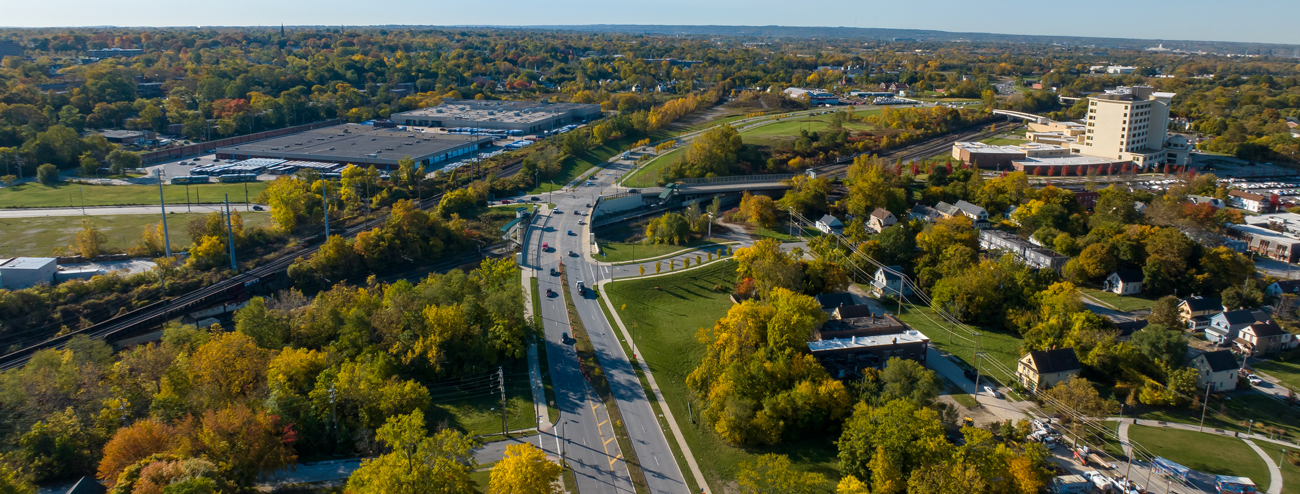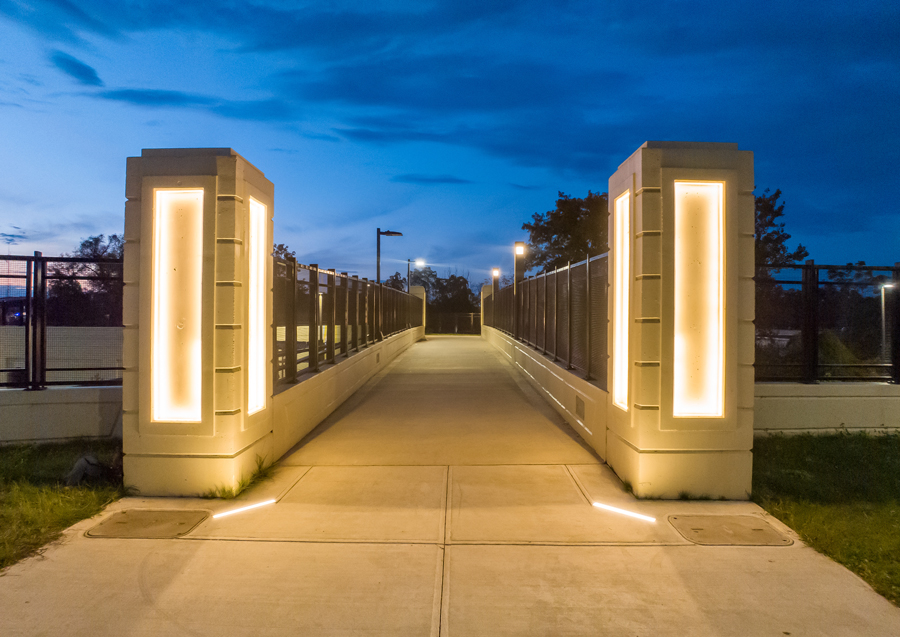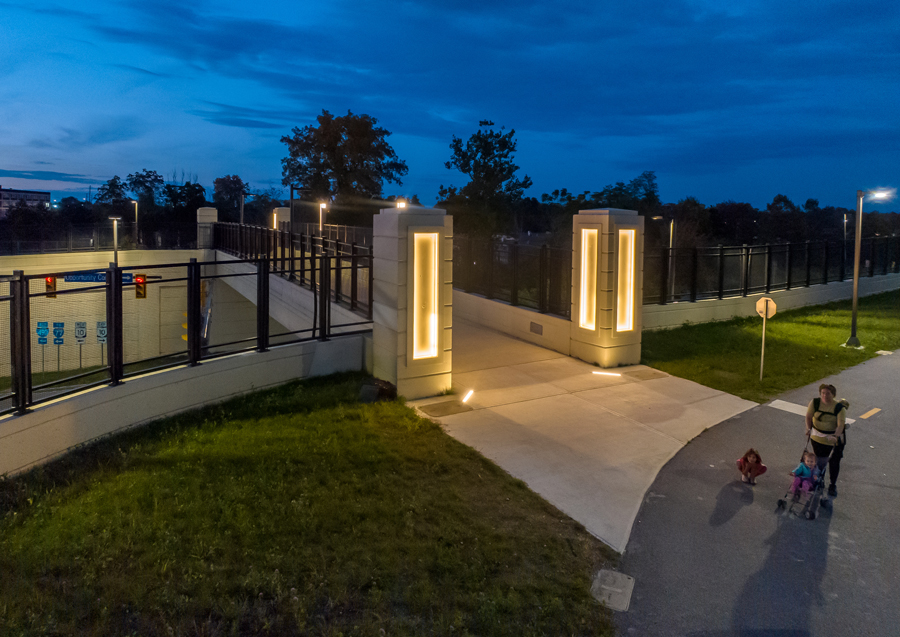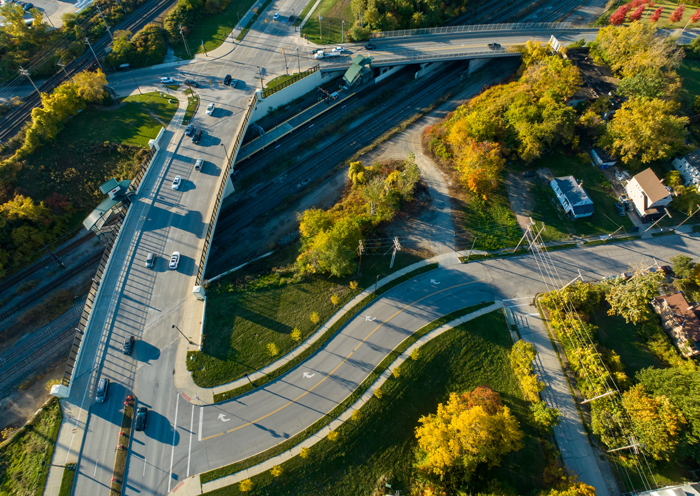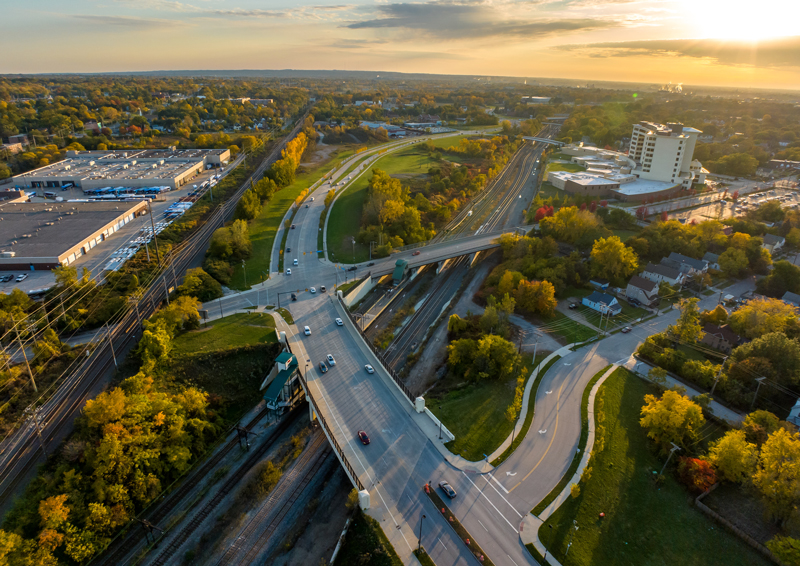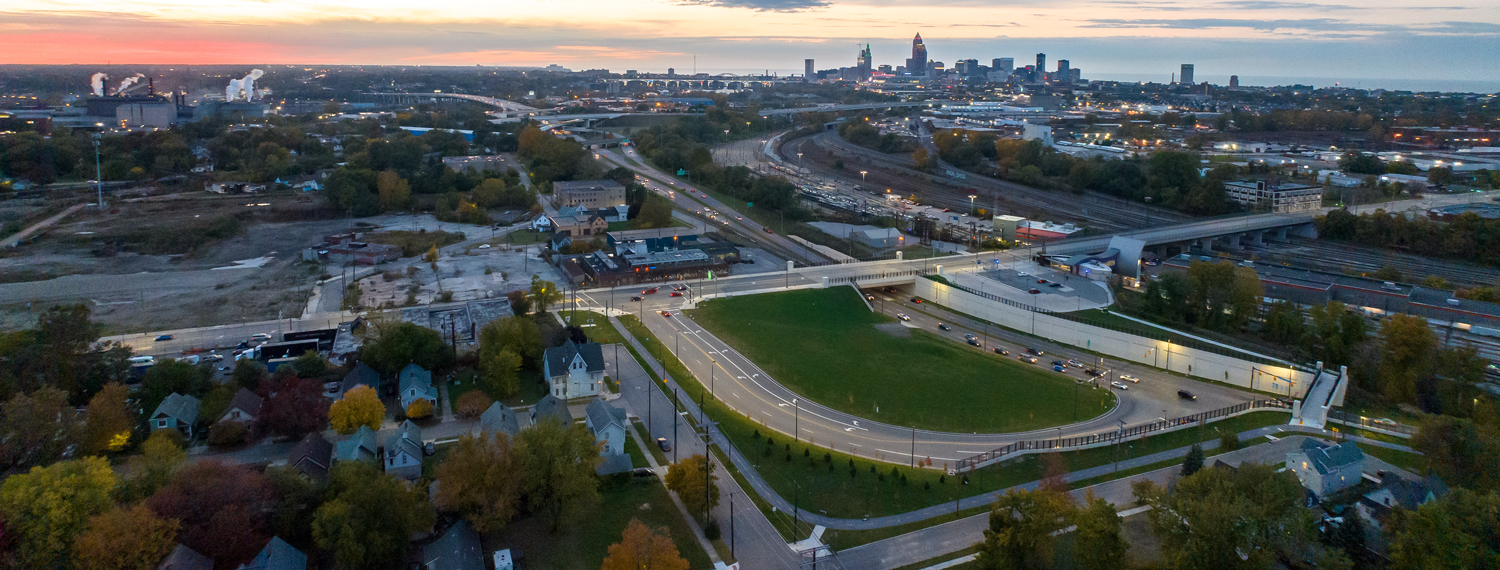The Opportunity Corridor project, led by the Ohio Department of Transportation, connects Interstate 490 and the city’s bustling, culturally rich University Circle area via a new, 3.6-mile boulevard.
It’s a project designed to spur economic development for Cleveland’s southeast neighborhoods that stand along the route — an area locally known as the “forgotten triangle” due to the lack of connection and economic activity. By creating an attractive, tree-lined boulevard bordered by businesses and homes, rather than a freeway, state and city officials hope to draw attention, investment and jobs to this historically underserved area.
Providing support to ODOT throughout the entire life cycle of the project, HNTB first provided preliminary engineering and NEPA documentation services, then as designer and owner’s representative.
Putting the community’s needs first
It was important to both the city and the state that the neighborhoods not be adversely impacted by the project, and that any condemnation and demolition in the area be equitably coupled with efforts of revitalization. Intense public outreach helped to shape the project’s planning and design, during which as many as 27 different possibilities were analyzed. All of the alternatives were evaluated against their potential for economic benefits, impacts, and their inherent transportation benefits.
Residents wanted the project to complement—not divide—their neighborhoods. They also worried about its impact on local businesses, noise and traffic levels, and safety during and after construction. These considerations and other daily challenges informed the scope of the project and its role in the boosting the area’s economy.
The Corridor
The boulevard is both well-lit and aesthetically pleasing, accented by plantings, architectural treatments on walls and bridges, and other artistic elements inspired by the locale. Pathways for pedestrians and bicycles have been added, bridges over rail lines and other roads have been built or rebuilt, and adjacent roadways have been improved. An existing rail station also was expanded, with a second elevator added for greater accessibility. The interconnection of non-continuous roadways will help improve mobility in the 1,000-acre area, making it easier and safer to navigate. An existing recreation center is also being expanded. Those displaced by the new corridor have been compensated and aided in finding housing either in their home neighborhoods or elsewhere, depending on where they opt to live. The project also provides new frontage to support commercial businesses along the route.
Equity in Hiring
Equity in planning and design has been complemented by equity in hiring. Local contractors and workers have been encouraged to join the project, and $500,000 was provided for on-the-job training. Notably, that training also extends to local residents. Anyone living in the impacted neighborhoods is eligible for this training, regardless of where they work.
First-Time Innovations
The project already has garnered much local attention. It included the state’s first reader-friendly Environmental Impact Statement (EIS) and represents the first time that the Ohio DOT combined the EIS and a Record of Decision into a single action. It was also the DOT’s first time utilizing Environmental Justice mitigation to offset impacts to low-income and minority communities. HNTB developed the EIS, which presented the information to residents and the general public in ways that were easy to understand and visually appealing. The EIS now is used as a model in ODOT training and has provided a benchmark for future projects.
Location: Cleveland, OH
Client: Ohio Department of Transportation
Awards: Top 10 Roads List, Roads and Bridges Magazine; Quality of Life/Community Development Medium Project, MAASTO's America's Transportation Award; ACEC Ohio Engineering Achievement - Outstanding achievement award
Services: preliminary engineering, National Environmental Policy Act documentation, owner's representative, design, design-build
Read More: Road to Opportunity, Designer article
